Nowhere to Hide: How a Nuclear War Would Kill You — And Almost Everyone Else.
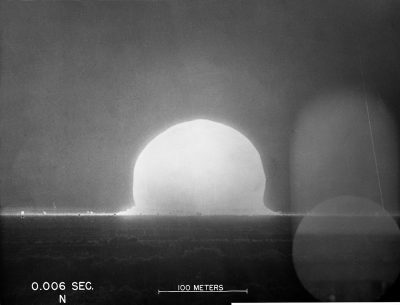
All Global Research articles can be read in 51 languages by activating the Translate Website button below the author’s name.
To receive Global Research’s Daily Newsletter (selected articles), click here.
Follow us on Instagram and Twitter and subscribe to our Telegram Channel. Feel free to repost and share widely Global Research articles.
***
This article was first crossposted by GR in October 2022.
This summer, the New York City Emergency Management department released a new public service announcement on nuclear preparedness, instructing New Yorkers about what to do during a nuclear attack. The 90-second video starts with a woman nonchalantly announcing the catastrophic news: “So there’s been a nuclear attack. Don’t ask me how or why, just know that the big one has hit.” Then the PSA video advises New Yorkers on what to do in case of a nuclear attack: Get inside, stay inside, and stay tuned to media and governmental updates.
But nuclear preparedness works better if you are not in the blast radius of a nuclear attack. Otherwise, there’s no going into your house and closing your doors because the house will be gone. Now imagine there have been hundreds of those “big ones.” That’s what even a “small” nuclear war would include. If you are lucky not to be within the blast radius of one of those, it may not ruin your day, but soon enough, it will ruin your whole life.
Effects of a single nuclear explosion
Any nuclear explosion creates radiation, heat, and blast effects that will result in many quick fatalities.
Direct radiation is the most immediate effect of the detonation of a nuclear weapon. It is produced by the nuclear reactions inside the bomb and comes mainly in the form of gamma rays and neutrons.
Direct radiation lasts less than a second, but its lethal level can extend over a mile in all directions from the detonation point of a modern-day nuclear weapon with an explosive yield equal to the effect of several hundred kilotons of TNT.
Microseconds into the explosion of a nuclear weapon, energy released in the form of X-rays heats the surrounding environment, forming a fireball of superheated air. Inside the fireball, the temperature and pressure are so extreme that all matter is rendered into a hot plasma of bare nuclei and subatomic particles, as is the case in the Sun’s multi-million-degree core.
The fireball following the airburst explosion of a 300-kiloton nuclear weapon—like the W87 thermonuclear warhead deployed on the Minuteman III missiles currently in service in the US nuclear arsenal—can grow to more than 600 meters (2,000 feet) in diameter and stays blindingly luminous for several seconds, before its surface cools.
The light radiated by the fireball’s heat—accounting for more than one-third of the thermonuclear weapon’s explosive energy—will be so intense that it ignites fires and causes severe burns at great distances. The thermal flash from a 300-kiloton nuclear weapon could cause first-degree burns as far as 13 kilometers (8 miles) from ground zero.
Then comes the blast wave.
The blast wave—which accounts for about half the bomb’s explosive energy—travels initially faster than the speed of sound but slows rapidly as it loses energy by passing through the atmosphere.
Because the radiation superheats the atmosphere around the fireball, air in the surroundings expands and is pushed rapidly outward, creating a shockwave that pushes against anything along its path and has great destructive power.
The destructive power of the blast wave depends on the weapon’s explosive yield and the burst altitude.
An airburst of a 300-kiloton explosion would produce a blast with an overpressure of over 5 pounds per square inch (or 0.3 atmospheres) up to 4.7 kilometers (2.9 miles) from the target. This is enough pressure to destroy most houses, gut skyscrapers, and cause widespread fatalities less than 10 seconds after the explosion.
Radioactive fallout
Shortly after the nuclear detonation has released most of its energy in the direct radiation, heat, and blast, the fireball begins to cool and rise, becoming the head of the familiar mushroom cloud. Within it is a highly-radioactive brew of split atoms, which will eventually begin to drop out of the cloud as it is blown by the wind. Radioactive fallout, a form of delayed radioactivity, will expose post-war survivors to near-lethal doses of ionizing radiation.
As for the blast, the severity of the fallout contamination depends on the fission yield of the bomb and its height of burst. For weapons in the hundreds of kilotons, the area of immediate danger can encompass thousands of square kilometers downwind of the detonation site. Radiation levels will be initially dominated by isotopes of short half-lives, which are the most energetic and so most dangerous to biological systems. The acutely lethal effects from the fallout will last from days to weeks, which is why authorities recommend staying inside for at least 48 hours, to allow radiation levels to decrease.
Because its effects are relatively delayed, estimating casualties from the fallout is difficult; the number of deaths and injuries will depend very much on what actions people take after an explosion. But in the vicinity of an explosion, buildings will be completely collapsed, and survivors will not be able to shelter. Survivors finding themselves less than 460 meters (1,500 feet) from a 300-kiloton nuclear explosion will receive an ionizing radiation dose of 500 Roentgen equivalent man (rem). “It is generally believed that humans exposed to about 500 rem of radiation all at once will likely die without medical treatment,” the US Nuclear Regulatory Commission says.
But at a distance so close to ground zero, a 300-kiloton nuclear explosion would almost certainly burn and crush to death any human being. The higher the nuclear weapon’s yield, the smaller the acute radiation zone is relative to its other immediate effects.
One detonation of a modern-day, 300-kiloton nuclear warhead—that is, a warhead nearly 10 times the power of the atomic bombs detonated at Hiroshima and Nagasaki combined—on a city like New York would lead to over one million people dead and about twice as many people with serious injuries in the first 24 hours after the explosion. There would be almost no survivors within a radius of several kilometers from the explosion site.
1,000,000 deaths after 24 hours
Immediate effects of nuclear war
In a nuclear war, hundreds or thousands of detonations would occur within minutes of each other.
Regional nuclear war between India and Pakistan that involved about 100 15-kiloton nuclear weapons launched at urban areas would result in 27 million direct deaths.
27,000,000 deaths from regional war
A global all-out nuclear war between the United States and Russia with over four thousand 100-kiloton nuclear warheads would lead, at minimum, to 360 million quick deaths.[1] That’s about 30 million people more than the entire US population.
360,000,000 deaths from global war
[1]This estimate is based on a scenario of an all-out nuclear war between Russia and the United States involving 4,400 100-kiloton weapons under the 2002 Strategic Offensive Reductions Treaty (SORT) limits, where each country can deploy up to 2,200 strategic warheads. The 2010 New START Treaty further limits the US- and Russian-deployed long-range nuclear forces down to 1,550 warheads. But as the average yield of today’s strategic nuclear forces of Russia and the United States far exceeds 100 kilotons, a full nuclear exchange between the two countries involving around 3,000 weapons likely would result in similar direct casualties and soot emissions.
In an all-out nuclear war between Russia and the United States, the two countries would not limit to shooting nuclear missiles at each other’s homeland but would target some of their weapons at other countries, including ones with nuclear weapons. These countries could launch some or all their weapons in retaliation.
Together, the United Kingdom, China, France, Israel, India, Pakistan, and North Korea currently have an estimated total of over 1,200 nuclear warheads.
As horrific as those statistics are, the tens to hundreds of millions of people dead and injured within the first few days of a nuclear conflict would only be the beginnings of a catastrophe that eventually will encompass the whole world.
Global climatic changes, widespread radioactive contamination, and societal collapse virtually everywhere could be the reality that survivors of a nuclear war would contend with for many decades.
Two years after any nuclear war—small or large—famine alone could be more than 10 times as deadly as the hundreds of bomb blasts involved in the war itself.
The longer-term consequences of nuclear war
In recent years, in some US military and policy circles, there has been a growing perception that a limited nuclear war can be fought and won. Many experts believe, however, that a limited nuclear war is unlikely to remain limited. What starts with one tactical nuclear strike or a tit-for-tat nuclear exchange between two countries could escalate to an all-out nuclear war ending with the immediate and utter destruction of both countries.
But the catastrophe will not be limited to those two belligerents and their allies.
The long-term regional and global effects of nuclear explosions have been overshadowed in public discussions by the horrific, obvious, local consequences of nuclear explosions. Military planners have also focused on the short-term effects of nuclear explosions because they are tasked with estimating the capabilities of nuclear forces on civilian and military targets. Blast, local radiation fallout, and electromagnetic pulse (an intense burst of radio waves that can damage electronic equipment) are all desired outcomes of the use of nuclear weapons—from a military perspective.
But widespread fires and other global climatic changes resulting from many nuclear explosions may not be accounted for in war plans and nuclear doctrines. These collateral effects are difficult to predict; assessing them requires scientific knowledge that most military planners don’t possess or take into account. Yet, in the few years following a nuclear war, such collateral damage may be responsible for the death of more than half of the human population on Earth.
Global climatic changes
Since the 1980s, as the threat of nuclear war reached new heights, scientists have investigated the long-term, widespread effects of nuclear war on Earth systems. Using a radiative-convective climate model that simulates the vertical profile of atmospheric temperatures, American scientists first showed that a nuclear winter could occur from the smoke produced by the massive forest fires ignited by nuclear weapons after a nuclear war. Two Russian scientists later conducted the first three-dimensional climate modeling showing that global temperatures would drop lower on land than on oceans, potentially causing an agricultural collapse worldwide. Initially contested for its imprecise results due to uncertainties in the scenarios and physical parameters involved, nuclear winter theory is now supported by more sophisticated climate models. While the basic mechanisms of nuclear winter described in the early studies still hold today, most recent calculations have shown that the effects of nuclear war would be more long-lasting and worse than previously thought.
Stratospheric soot injection
The heat and blast from a thermonuclear explosion are so powerful they can initiate large-scale fires in both urban and rural settings. A 300-kiloton detonation in a city like New York or Washington DC could cause a mass fire with a radius of at least 5.6 kilometers (3.5 miles), not altered by any weather conditions. Air in that area would be turned into dust, fire, and smoke.
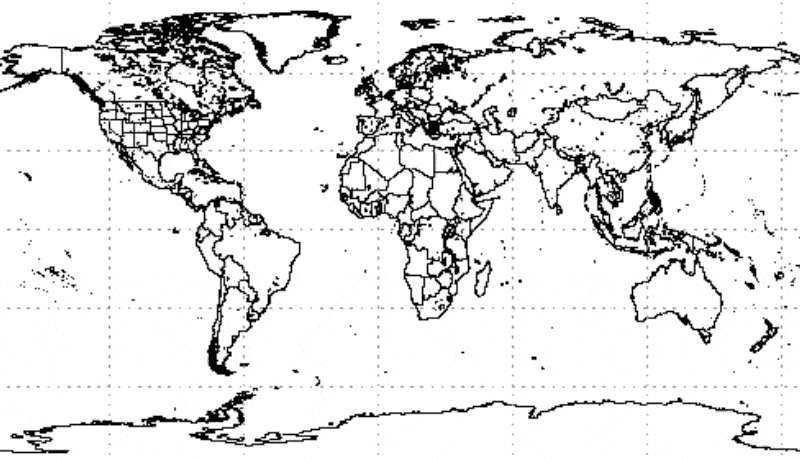
A simulation of the vertically averaged smoke optical depth in the first 54 days after a nuclear war between India and Pakistan. (Robock et al., Atmos. Chem. Phys., 7, 2003–2012, 2007)
But a nuclear war will set not just one city on fire, but hundreds of them, all but simultaneously. Even a regional nuclear war—say between India and Pakistan—could lead to widespread firestorms in cities and industrial areas that would have the potential to cause global climatic change, disrupting every form of life on Earth for decades.
Smoke from mass fires after a nuclear war could inject massive amounts of soot into the stratosphere, the Earth’s upper atmosphere. An all-out nuclear war between India and Pakistan, with both countries launching a total of 100 nuclear warheads of an average yield of 15 kilotons, could produce a stratospheric loading of some 5 million tons (or teragrams, Tg) of soot. This is about the mass of the Great Pyramid of Giza, pulverized and turned into superheated dust.
But these lower-end estimates date back to the late 2000s. Since then, India and Pakistan have significantly expanded their nuclear arsenals, both in the number of nuclear warheads and yield. By 2025, India and Pakistan could have up to 250 nuclear weapons each, with yields of 12 kilotons on the low end, up to a few hundred kilotons. A nuclear war between India and Pakistan with such arsenals could send up to 47 Tg of soot into the stratosphere.
For comparison, the recent catastrophic forest fires in Canada in 2017 and Australia in 2019 and 2020 produced 0.3 Tg and 1 Tg of smoke respectively. Chemical analysis showed, however, that only a small percentage of the smoke from these fires was pure soot—0.006 and 0.02 Tg respectively. This is because only wood was burning. Urban fires following a nuclear war would produce more smoke, and a higher fraction would be soot. But these two episodes of massive forest fires demonstrated that when smoke is injected into the lower stratosphere, it is heated by sunlight and lofted at high altitudes—10 to 20 kilometers (33,000 to 66,000 feet)—prolonging the time it stays in the stratosphere. This is precisely the mechanism that now allows scientists to better simulate the long-term impacts of nuclear war. With their models, researchers were able to accurately simulate the smoke from these large forest fires, further supporting the mechanisms that cause nuclear winter.
The climatic response from volcanic eruptions also continues to serve as a basis for understanding the long-term impacts of nuclear war. Volcanic blasts typically send ash and dust up into the stratosphere where it reflects sunlight back into space, resulting in the temporary cooling of the Earth’s surface. Likewise, in the theory of nuclear winter, the climatic effects of a massive injection of soot aerosols into the stratosphere from fires following a nuclear war would lead to the heating of the stratosphere, ozone depletion, and cooling at the surface under this cloud. Volcanic eruptions are also useful because their magnitude can match—or even surpass—the level of nuclear explosions. For instance, the 2022 Hunga Tonga’s underwater volcano released an explosive energy of 61 megatons of TNT equivalent—more than the Tsar Bomba, the largest human-made explosion in history with 50 Mt. Its plume reached altitudes up to about 56 kilometers (35 miles), injecting well over 50 Tg—even up to 146 Tg—of water vapor into the stratosphere where it will stay for years. Such a massive injection of stratospheric water could temporarily impact the climate—although differently than soot.
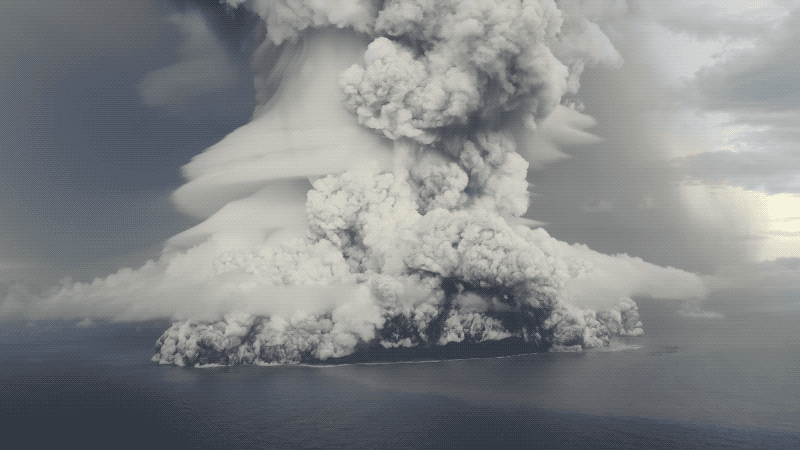
Aerial footage of the 2022 Hunga Tonga volcanic eruption. The vapor plume reached altitudes up to 56 kilometers (35 miles) and injected more than 50 teragrams of water vapor into the stratosphere. (Tonga Geological Services via YouTube)
Since Russia’s war in Ukraine started, President Putin and other Russian officials have made repeated nuclear threats, in an apparent attempt to deter Western countries from any direct military intervention. If Russia were to ever start—voluntarily or accidentally—nuclear war with the United States and other NATO countries, the number of devastating nuclear explosions involved in a full exchange could waft more than 150 Tg of soot into the stratosphere, leading to a nuclear winter that would disrupt virtually all forms of life on Earth over several decades.
Stratospheric soot injections associated with different nuclear war scenarios would lead to a wide variety of major climatic and biogeochemical changes, including transformations of the atmosphere, oceans, and land. Such global climate changes will be more long-lasting than previously thought because models of the 1980s did not adequately represent the stratospheric plume rise. It is now understood that soot from nuclear firestorms would rise much higher into the stratosphere than once imagined, where soot removal mechanisms in the form of “black rains” are slow. Once the smoke is heated by sunlight it can self-loft to altitudes as high as 80 kilometers (50 miles), penetrating the mesosphere.
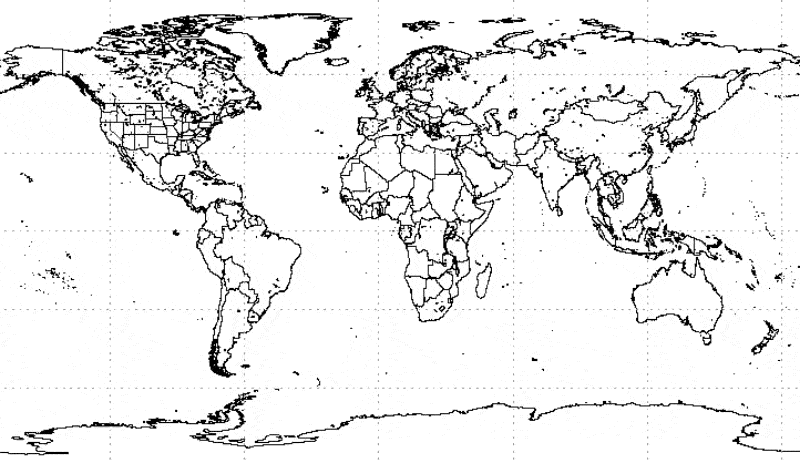
A simulation of the vertically averaged smoke optical depth in the first 54 days after a nuclear war between Russia and the United States. (Alan Robock)
Changes in the atmosphere
After soot is injected into the upper atmosphere, it can stay there for months to years, blocking some direct sunlight from reaching the Earth’s surface and decreasing temperatures. At high altitudes—20 kilometers (12 miles) and above near the equator and 7 kilometers (4.3 miles) at the poles—the smoke injected by nuclear firestorms would also absorb more radiation from the sun, heating the stratosphere and perturbing stratospheric circulation.
In the stratosphere, the presence of highly absorptive black carbon aerosols would result in considerably enhanced stratospheric temperatures. For instance, in a regional nuclear war scenario that leads to a 5-Tg injection of soot, stratospheric temperatures would remain elevated by 30 degrees Celsius after four years.
The extreme heating observed in the stratosphere would increase the global average loss of the ozone layer—which protects humans and other life on Earth from the severe health and environmental effects of ultraviolet radiation—for the first few years after a nuclear war. Simulations have shown that a regional nuclear war that lasted three days and injected 5 Tg of soot into the stratosphere would reduce the ozone layer by 25 percent globally; recovery would take 12 years. A global nuclear war injecting 150 Tg of stratospheric smoke would cause a 75 percent global ozone loss, with the depletion lasting 15 years.
Changes on land
Soot injection in the stratosphere will lead to changes on the Earth’s surface, including the amount of solar radiation that is received, air temperature, and precipitation.
The loss of the Earth’s protective ozone layer would result in several years of extremely high ultraviolet (UV) light at the surface, a hazard to human health and food production. Most recent estimates indicate that the ozone loss after a global nuclear war would lead to a tropical UV index above 35, starting three years after the war and lasting for four years. The US Environmental Protection Agency considers a UV index of 11 to pose an “extreme” danger; 15 minutes of exposure to a UV index of 12 causes unprotected human skin to experience sunburn. Globally, the average sunlight in the UV-B range would increase by 20 percent. High levels of UV-B radiation are known to cause sunburn, photoaging, skin cancer, and cataracts in humans. They also inhibit the photolysis reaction required for leaf expansion and plant growth.
Smoke lofted into the stratosphere would reduce the amount of solar radiation making it to Earth’s surface, reducing global surface temperatures and precipitation dramatically.
Even a nuclear exchange between India and Pakistan—causing a relatively modest stratospheric loading of 5 Tg of soot—could produce the lowest temperatures on Earth in the past 1,000 years—temperatures below the post-medieval Little Ice Age. A regional nuclear war with 5-Tg stratospheric soot injection would have the potential to make global average temperatures drop by 1 degree Celsius.
Even though their nuclear arsenals have been cut in size and average yield since the end of the Cold War, a nuclear exchange between the United States and Russia would still likely initiate a much more severe nuclear winter, with much of the northern hemisphere facing below-freezing temperatures even during the summer. A global nuclear war that injected 150 Tg of soot into the stratosphere could make temperatures drop by 8 degrees Celsius—3 degrees lower than Ice Age values.
In any nuclear war scenario, the temperature changes would have their greatest effect on mid- and high-latitude agriculture, by reducing the length of the crop season and the temperature even during that season. Below-freezing temperatures could also lead to a significant expansion of sea ice and terrestrial snowpack, causing food shortages and affecting shipping to crucial ports where sea ice is not now a factor.
Global average precipitation after a nuclear war would also drop significantly because the lower amounts of solar radiation reaching the surface would reduce temperatures and water evaporation rates. The precipitation decrease would be the greatest in the tropics. For instance, even a 5-Tg soot injection would lead to a 40 percent precipitation decrease in the Asian monsoon region. South America and Africa would also experience large drops in rainfall.
Changes in the ocean
The longest-lasting consequences of any nuclear war would involve oceans. Regardless of the location and magnitude of a nuclear war, the smoke from the resulting firestorms would quickly reach the stratosphere and be dispersed globally, where it would absorb sunlight and reduce the solar radiation to the ocean surface. The ocean surface would respond more slowly to changes in radiation than the atmosphere and land due to its higher specific heat capacity (i.e., the quantity of heat needed to raise the temperature per unit of mass).
Global ocean temperature decrease will be the greatest starting three to four years after a nuclear war, dropping by approximately 3.5 degrees Celsius for an India-Pakistan war (that injected 47 Tg of smoke into the stratosphere) and six degrees Celsius for a global US-Russia war (150 Tg). Once cooled, the ocean will take even more time to return to its pre-war temperatures, even after the soot has disappeared from the stratosphere and solar radiation returns to normal levels. The delay and duration of the changes will increase linearly with depth. Abnormally low temperatures are likely to persist for decades near the surface, and hundreds of years or longer at depth. For a global nuclear war (150 Tg), changes in ocean temperature to the Arctic sea-ice are likely to last thousands of years—so long that researchers talk of a “nuclear Little Ice Age.”
Because of the dropping solar radiation and temperature on the ocean surface, marine ecosystems would be highly disrupted both by the initial perturbation and by the new, long-lasting ocean state. This will result in global impacts on ecosystem services, such as fisheries. For instance, the marine net primary production (a measure of the new growth of marine algae, which makes up the base of the marine food web) would decline sharply after any nuclear war. In a US-Russia scenario (150 Tg), the global marine net primary production would be cut almost by half in the months after the war and would remain reduced by 20 to 40 percent for over 4 years, with the largest decreases being in the North Atlantic and North Pacific oceans.
Impacts on food production
Changes in the atmosphere, surface, and oceans following a nuclear war will have massive and long-term consequences on global agricultural production and food availability. Agriculture responds to the length of growing seasons, the temperature during the growing season, light levels, precipitation, and other factors. A nuclear war will significantly alter all of those factors, on a global scale for years to decades.
Using new climate, crop, and fishery models, researchers have now demonstrated that soot injections larger than 5 Tg would lead to mass food shortages in almost all countries, although some will be at greater risk of famine than others. Globally, livestock production and fishing would be unable to compensate for reduced crop output. After a nuclear war, and after stored food is consumed, the total food calories available in each nation will drop dramatically, putting millions at risk of starvation or undernourishment. Mitigation measures—shifts in production and consumption of livestock food and crops, for example—would not be sufficient to compensate for the global loss of available calories.
The aforementioned food production impacts do not account for the long-term direct impacts of radioactivity on humans or the widespread radioactive contamination of food that could follow a nuclear war. International trade of food products could be greatly reduced or halted as countries hoard domestic supplies. But even assuming a heroic action of altruism by countries whose food systems are less affected, trade could be disrupted by another effect of the war: sea ice.
Cooling of the ocean’s surface would lead to an expansion of sea ice in the first years after a nuclear war, when food shortages would be highest. This expansion would affect shipping into crucial ports in regions where sea ice is not currently experienced, such as the Yellow Sea.
Nowhere to hide
The impacts of nuclear war on agricultural food systems would have dire consequences for most humans who survive the war and its immediate effects.
The overall global consequences of nuclear war—including both short-term and long-term impacts—would be even more horrific causing hundreds of millions—even billions—of people to starve to death.
*
Note to readers: Please click the share buttons above. Follow us on Instagram and Twitter and subscribe to our Telegram Channel. Feel free to repost and share widely Global Research articles.
Featured image: Photos from the first second of the Trinity test shot, the first nuclear explosion on Earth. (Los Alamos National Laboratory)
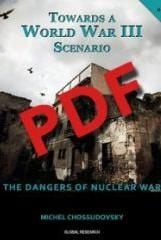 “Towards a World War III Scenario: The Dangers of Nuclear War”
“Towards a World War III Scenario: The Dangers of Nuclear War”
by Michel Chossudovsky
Available to order from Global Research!
ISBN Number: 978-0-9737147-5-3
Year: 2012
Pages: 102
PDF Edition: $6.50 (sent directly to your email account!)
Michel Chossudovsky is Professor of Economics at the University of Ottawa and Director of the Centre for Research on Globalization (CRG), which hosts the critically acclaimed website www.globalresearch.ca . He is a contributor to the Encyclopedia Britannica. His writings have been translated into more than 20 languages.
Reviews
“This book is a ‘must’ resource – a richly documented and systematic diagnosis of the supremely pathological geo-strategic planning of US wars since ‘9-11’ against non-nuclear countries to seize their oil fields and resources under cover of ‘freedom and democracy’.”
–John McMurtry, Professor of Philosophy, Guelph University
“In a world where engineered, pre-emptive, or more fashionably “humanitarian” wars of aggression have become the norm, this challenging book may be our final wake-up call.”
-Denis Halliday, Former Assistant Secretary General of the United Nations
Michel Chossudovsky exposes the insanity of our privatized war machine. Iran is being targeted with nuclear weapons as part of a war agenda built on distortions and lies for the purpose of private profit. The real aims are oil, financial hegemony and global control. The price could be nuclear holocaust. When weapons become the hottest export of the world’s only superpower, and diplomats work as salesmen for the defense industry, the whole world is recklessly endangered. If we must have a military, it belongs entirely in the public sector. No one should profit from mass death and destruction.
–Ellen Brown, author of ‘Web of Debt’ and president of the Public Banking Institute

